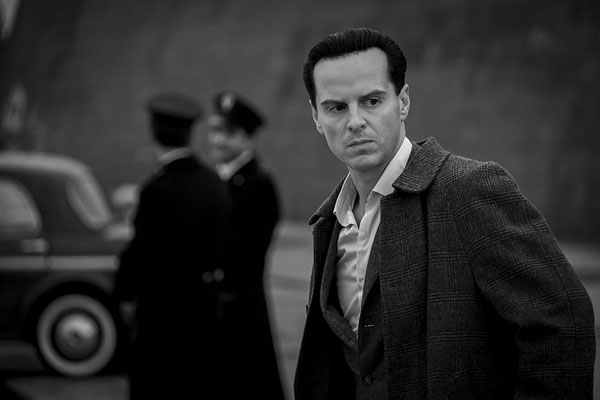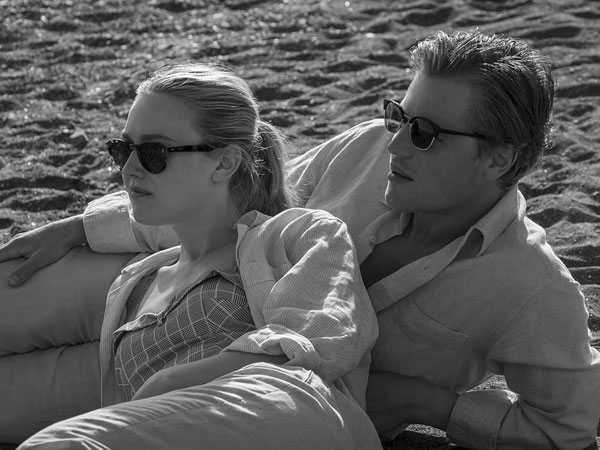|
Eichmann in Jerusalem: A Report on the Banality of Evil was
the title of the book
Hannah Arendt published in
1963, and the last four
words of that title have
become a common
axiom. Reporting on
Eichmann’s war
crimes trial, Arendt
presented Eichmann as a
cipher, a man who could
neither think nor act for
himself, who committed
some of the ghastliest
atrocities in world
history simply to be with
the “in”
crowd. His sense of
duty led him to be
extremely efficient in
establishing the
mechanisms of mass
slaughter; he was
unconcerned about the
immorality of his actions,
and thought that his
obedience to superior
officers absolved him from
guilt.
Arendt’s observations have a direct bearing on the events in The
Zone of Interest, Jonathan
Glazer’s
Oscar-winning film based
on a novel by Martin
Amis. The Zone of Interest centers
on the family life of one
of Eichmann’s
cohorts, Auschwitz
commandant Rudolf Hoess
(not to be confused with
Rudolf Hess, who was
already imprisoned in the
Tower of London at the
time the film’s
events took place).
Currently streaming on Max, The Zone of Interest contains
a classic, and horrifying,
McGuffin. If you
were to ask Hoess
(Christian Friedel) and
his wife Hedwig (Sandra
Hueller) what the film is
about, they would say
it’s about the
trouble caused when Hoess
receives a promotion and
transfer, which may force
him and Hedwig to leave
the happy home they have
created for themselves and
their children. The
home in question is an old
and spacious brick house,
with a wading pool, a
greenhouse, flower and
vegetable gardens tended
lovingly by Hedwig and the
servants, and a high brick
wall that separates it
from the camp where Hoess
and his subordinates
murder thousands every day.
The Zone of Interest is
virtually a treatise
proving Arendt’s
hypothesis. It is
difficult to imagine any
people more banal, or more
evil, than Rudolf and
Hedwig Hoess. Glazer
never editorializes; he
merely presents them in
their daily lives,
beginning with their
idyllic picnic with the
kids by a river,
accompanied by the
not-too-distant sounds of
guns firing, dogs barking,
people screaming.

Glazer presents every infamy matter-of-factly. Engineers show up to
sell Rudolf on a wonderfully efficient new crematorium. Hedwig tries
on a fur coat looted from a camp inmate, and hands out confiscated
blouses to the maids. Later, displeased with one of the maids, she
shouts, “My husband will spread your ashes over the fields of Bodice!”
Rudolf writes a stern note to the guards, telling them to leave his
prized lilac bushes alone; later, he orders the drowning of a prisoner
who had been fighting over food. We don’t see the drowning; we hear
Rudolf shouting the order, the prisoner pleading, the splash of his
being pushed under water, while Hedwig and the children relax in the
garden.
I could go on and on, each example more horrible than the last. There
are virtually no close-ups in The Zone of Interest; everything is filmed
in the far or middle distance, the better to emphasize the ordinariness
of the inhumanity on display. In the same vein, we never see any
violence, but—thanks to Glazer and his masterful sound editor,
Johnnie Burn—we hear it incessantly. Like the best makers of horror
films, Glazer and Burn understand that what you don’t see is far more
terrifying than what you do.
Also deserving praise is the film’s composer, Mica Levi, whose music
over the opening and closing credits evokes the tortures of the
damned. The Zone of Interest is surely one of the best feature films
ever made about the Holocaust, and it demonstrates, in one fleeting
scene, how inhumanity is passed from one generation to the next. The
Hoess boys are playing in the garden; the older boy locks the younger
in the greenhouse and imitates the hissing sound of Zyklon-B as his
brother pounds the doors to get out.
Ripley—the eight-part Netflix miniseries by Steven Zaillian, based on
Patricia Highsmith’s fiction—is a less perfect fit for Arendt than The
Zone of Interest. Tom Ripley (Andrew Scott) does not and will never
want to be part of any crowd, and he certainly knows how to think for
himself. He does, however, want to blend in with the crowd,
particularly the crowd that has wealth and privilege. He wants what
they have, and—as previous incarnations of Ripley have
demonstrated—he will stop at nothing to get it, the fear of getting
caught his only qualm.

It has been too long since I’ve seen Rene Clement’s Purple Noon, the
first Ripley film, which was made in 1960. But Ripley is resoundingly
different from both Purple Noon and The Talented Mr. Ripley, Anthony Minghella’s 1999 film which remains the most famous
cinematic incarnation of Tom Ripley. Whereas both Purple Noon and The Talented Mr. Ripley are drenched in dazzling Mediterranean sun, Ripley is filmed (by Robert Elswit) in the crispest, bleakest black and
white, stressing the story’s noir elements. Zaillian’s Ripley is also very
different from either Clement’s or Minghella’s. He isn’t the
magnetically handsome Alain Delon or the boyishly charming Matt
Damon; Andrew Scott, his face a sharply chiseled mask, is a man
without qualities, a blank screen on which others can project their
assumptions about him.
The details of Ripley’s life are also very different in Minghella’s and
Zaillian’s films. Minghella’s Ripley starts out as a freelance musician
who must work as a cloakroom attendant to make ends meet. Zaillian’s
Ripley is a cheap con man living in a flophouse whose latest
scheme—posing as a private detective working for a collection
agency—has just fallen through.
These differences carry through to the events in Italy with Dickie
Greenleaf. Both Damon’s and Scott’s Ripleys are gay, but Damon’s is
ardently so. His romantic desire for Dickie and his assumption of
Dickie’s identity are deeply intertwined, the first leading to the second.
Conversely, we learn in the course of Ripley that Scott’s Ripley is gay,
and eventually it becomes part of his subterfuge regarding Dickie. But
we never see him registering or expressing sexual desire for anyone.
He is motivated entirely by greed; at the end of the first episode,
having just met Dickie, he is already practicing his Dickie imitation in
the mirror. (It is emblematic of Zaillian’s approach that Peter Smith
-Kingsley, the character played by Jack Davenport in The Talented Mr.
Ripley, does not appear in Zaillian’s film.)
Scott’s Ripley is just as much an improvisatory artist as Damon’s, and
the longer running time of Ripley (nearly four times that of The
Talented Mr. Ripley) allows Zaillian to go into detail about Ripley’s
machinations in covering up his crimes. Some of them are darkly
funny, such as the troubles Ripley has with the motorboat off the coast
of San Remo; others, frankly, grow tedious, such as his misadventures
with the corpse and car of Freddie Miles (Eliot Sumner). One of his
more interesting subterfuges involves his intense identification with
Caravaggio, a running motif throughout the series. In the end,
however, the Ripley of Ripley is not a mastermind, or even particularly
intelligent. In this way he is very much what Arendt had in mind. He
is prone to miscalculations, many of them borne from lack of
empathy. He succeeds through sheer luck and the fact that virtually
everyone he meets is as mediocre as he is. Freddie, Dickie (Johnny
Flynn), Marge Sherwood (Dakota Fanning), Herbert Greenleaf
(Kenneth Lonergan), even Inspector Ravini (Maurizio Lombardi) are
limited in their own ways—sheep hampered by lack of imagination or
overdeveloped senses of propriety from sensing the wolf in their midst.

Except for Sumner, a weak successor to Philip Seymour Hoffman in
Minghella’s film, the cast of Ripley is first-rate. I especially liked the
sturdy decency Fanning projects as Marge, and the world-weary air of
Lombardi’s Inspector Ravini. The standout, however, is Scott, who has
been on the verge of international stardom for years and now seems
poised to achieve it. The feral nature of his Ripley is always fascinating
to watch, even when the action slows to a crawl.
While no sequels to Ripley have been announced, Zaillian has optioned
all five Ripley novels, and the appearance of Reeves Minot (John
Malkovich), a character who figures in the later Ripley novels, further
suggests that Zaillian plans to keep going. I can think of far worse ways
to spend a few evenings than with The Reptilian Mr. Ripley, slithering
between luxurious hideouts.
|